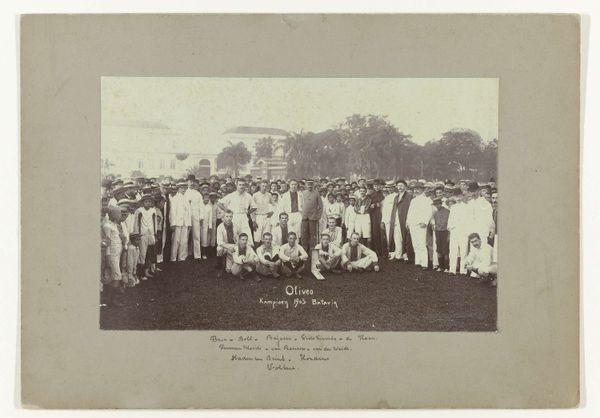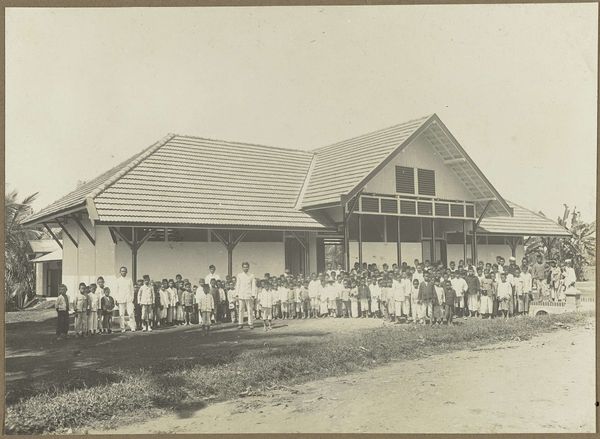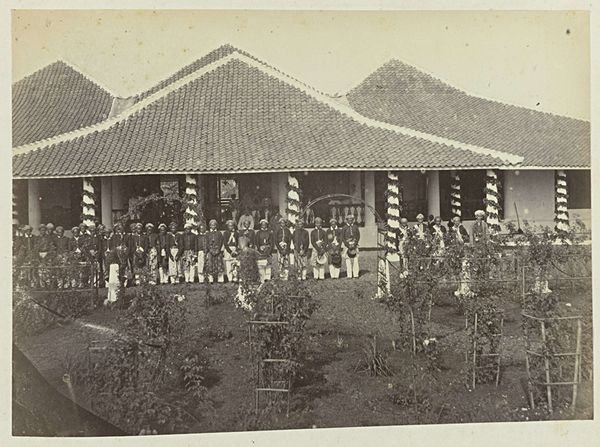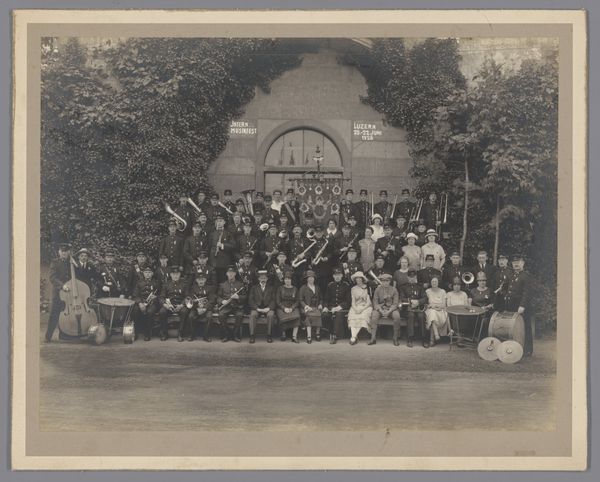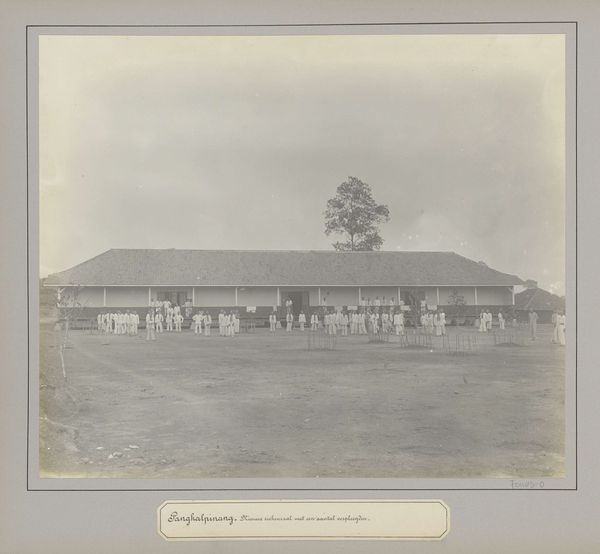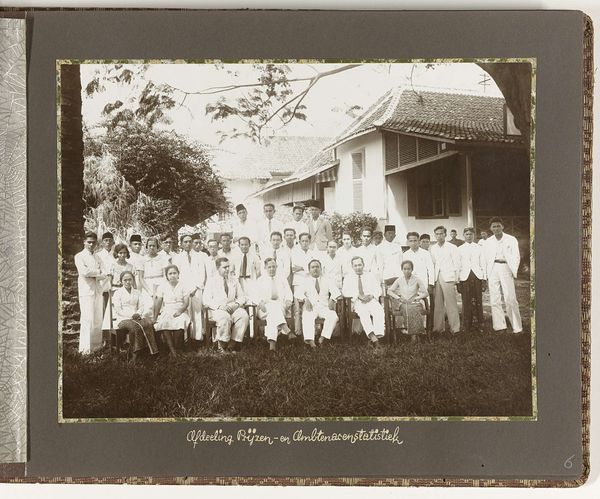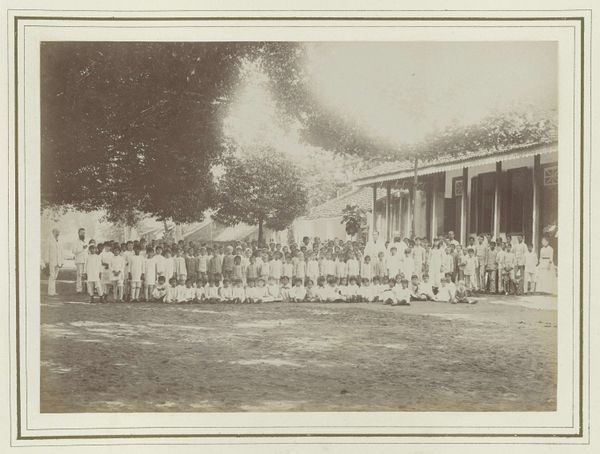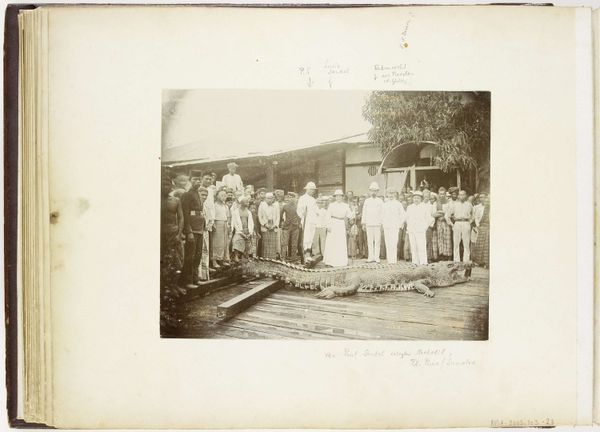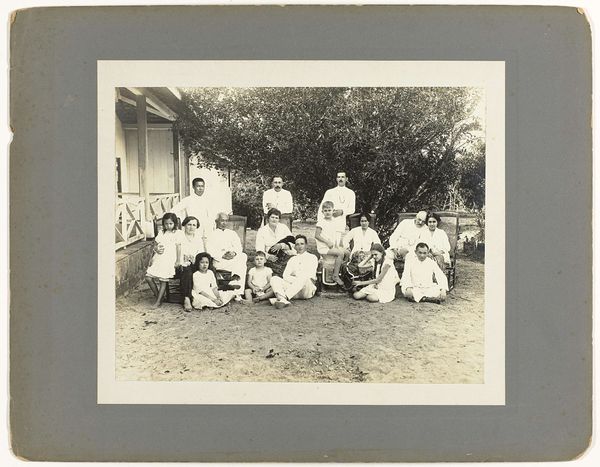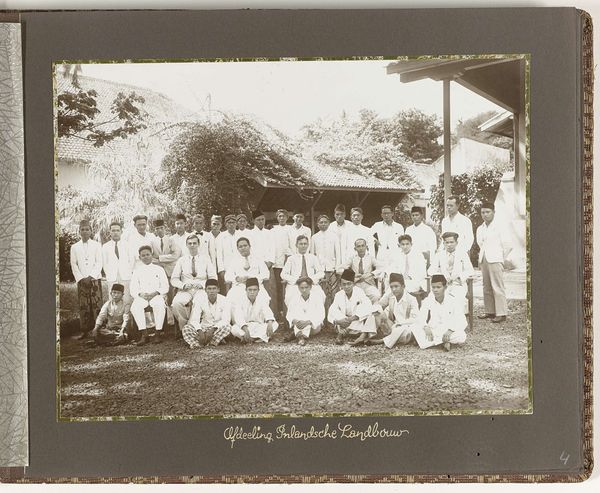
photography, albumen-print
#
portrait
#
indigenism
#
photography
#
group-portraits
#
albumen-print
Dimensions: height 188 mm, width 245 mm
Copyright: Rijks Museum: Open Domain
Editor: This albumen print, titled "Leerlingen," was created around 1902. It appears to be a group portrait of students, quite formal, posing outside what looks like a school building. The crispness of the details in their clothing is striking. What elements stand out to you in this photograph? Curator: Considering it’s an albumen print, a process demanding skill and time, it begs the question: what sort of labor produced this image and for whom? Look closely—are these students, or perhaps something closer to colonial subjects being documented? The uniformity in some outfits, contrasted against the variation in others...it suggests a careful orchestration of class and power dynamics. Editor: That’s a compelling point. I was so focused on the composition that I didn’t consider the socio-economic context deeply enough. The material itself, the albumen print, points to a certain colonial history, doesn’t it? Curator: Precisely! The choice of material wasn't neutral. Albumen printing required specific resources and techniques often linked to colonial exploitation. Moreover, photography in that era was a tool of documentation and control, so think about the intended audience. Was it to legitimize colonial power, or was it perhaps to show progress through education? The subtle choices in dress—who is wearing what, and where the fabrics came from—might point us toward an answer. Editor: So by examining the photograph's material origins and intended uses, we gain insights into broader social and historical forces at play? Curator: Exactly. By considering not only the final image but also the processes, materials, and the people involved in its creation, we move beyond simply admiring the composition, and understand the photograph as a product deeply embedded in the material conditions of its time. Editor: Thank you. I will definitely reconsider what I know about material culture. Curator: An understanding of labor, consumption and materiality are key components to unlocking a fuller history of an artwork.
Comments
No comments
Be the first to comment and join the conversation on the ultimate creative platform.
